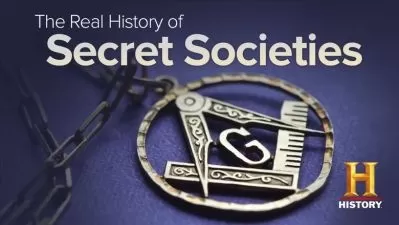Pompeii: Daily Life in an Ancient Roman City
Steven L. Tuck
11:42:49
Description
On August 24, in the year A.D. 79, Pliny the Younger looked up and saw a spectacle the world would never forget. As he later wrote down, "A cloud was ascending, the appearance of which I cannot give you a more exact description of than by likening it to that of a great pine tree, for it shot up to a great height in the form of a very tall trunk, which spread itself out at the top into a sort of branches. It appeared sometimes bright and sometimes dark and spotted, according as it was either more or less impregnated with earth and cinders."
Thus opened the sole eyewitness account of the eruption of Mount Vesuvius—one of the most iconic natural disasters in the history of the ancient world.
Most people are familiar with this story. Over three harrowing days, the inhabitants of Pompeii experienced the full force of Mother Nature's fury in the form of blasts of superheated gases, rains of pumice stone and ash, and rivers of scorching mud.
Yet while the account of the eruption is compelling, Pompeii holds a much more intriguing story for historians: a tale of everyday 1st-century life, flash-frozen in time under mountains of sediment. The tragedy left a rich record of daily life as it was experienced by all strata of Roman society; housewives, slaves, merchants, and politicians were stopped in their tracks on that fateful day. Through careful excavations of Pompeii, scholars have revealed the hidden complexities of ancient life, unveiling the everyday activities of commerce, agriculture, politics, and private life otherwise lost to modern eyes.
In Pompeii: Daily Life in an Ancient Roman City, gain a tantalizing glimpse into this world, as eminent classicist and Professor Steven L. Tuck resurrects the long-lost lives of aristocrats, merchants, slaves, and other Roman people in this imperial city. The result is an unprecedented view of life as it was lived in this ancient culture—and your chance to discover intriguing details that lay buried for centuries. In 24 enthralling lectures, Professor Tuck unearths these everyday truths to create a full portrait of daily life in the ancient world.
In-Depth Information and Unexpected Insights
In the opening lectures of Pompeii: Daily Life in an Ancient Roman City, you'll consider the geology and geography of this region and learn about the area's pre-Roman settlers. Next, you'll hear how the city was rediscovered in the 1700s, and examine the cutting-edge excavation techniques used to uncover the city's buried treasures.
Then, Professor Tuck takes you on an in-depth tour of Pompeii with a side trip to neighboring Herculaneum. Finally, you'll get an account of the eruption itself, re-created from ancient writings, archaeological evidence, and the latest scientific insights.
Along the way, Professor Tuck offers surprising facts and dispels long-held misconceptions, including these interesting insights:
- Only an estimated 5% of the residents of Pompeii perished in the eruption. Survivors can be traced as far away as Spain.
- Despite the searing heat of Vesuvius, 1,800 carbonized scrolls were discovered in an ancient library in the nearby city of Herculaneum, and more than 50,000 bits of writing have been preserved as graffiti scattered throughout the remains.
- The features that made Pompeii such an attractive site for human habitation—the richness of its soil, its mineral-rich hot springs—were the result of geologic forces that ultimately led to the city's destruction.
- The preserved ruins at Pompeii display evidence of a disaster that was a precursor to the eruption in 79—a massive earthquake that rocked the town in the year 62.
"At Pompeii, the Dead Do Speak"
As Professor Tuck delves into Pompeii's archaeological riches, long-silenced voices will sound loud and clear. You'll hear them as you meet a variety of Pompeii's original inhabitants. In a series of lectures, Professor Tuck selects actual Pompeian residents and reconstructs a typical day in their lives. Here are a few of the journeys you'll take:
- Follow Chryseis, a slave girl, as she accompanies her mistress to the public baths.
- Trace the steps of two city officials as they survey major civic structures and carry out their duties in local government.
- Attend the elaborate funeral procession of the exalted priestess Eumachia.
- Visit a fullonica—the ancient equivalent of a dry-cleaner—and meet the owner, a freed slave named Stephanus.
- Witness the rituals experienced by a young bride on the night before her wedding.
Taking the perspective of these diverse viewpoints, you'll gain remarkable insights into agriculture, commerce, civic planning, entertainment, local government, private life, and other aspects of the Pompeian experience.
Walk the Streets of an Ancient City
Professor Tuck also provides a virtual tour of the city that reflects the diverse lives of Pompeii's residents. As you visit cliff-top villas, local businesses, civic buildings, and private homes, you'll examine the intriguing clues these structures hold about the lives of everyday individuals.
Imagine, for example, the splendor of Pompeii's amphitheater, the site of gladiatorial games, and its Roman-style forum, seat of the city's government. You'll also explore commercial spaces, such as the only preserved brothel of Pompeii and the Praedia of Julia Felix, a massive rental structure housing baths, shops, and garden dining rooms.
To bring these structures to life, Professor Tuck shares exclusive photos he's taken of the surviving ruins and art, later artists' renditions of Pompeian life, videos, and remarkable computer reconstructions of these ancient structures, including the House of the Faun, home of the Roman Patron of the colony.
Your walk through Pompeii also reveals the marvels of Roman architecture and technology, as you explore the public baths, water systems, and other details of civic planning. Finally, you'll relive the cataclysmic eruption of 79 through computer reconstructions, images, and maps that trace the impact of Vesuvius on the surrounding communities.
Travel Back in Time to Ancient Pompeii
As Professor Tuck says, "The real treasure of Pompeii is how it can operate for us as a sort of time machine." You'll have no better guide than Professor Tuck. A noted scholar and expert on the classical world, Professor Tuck offers intriguing insights, allowing you to inhabit the lives of the people of the ancient Roman Empire.
Whether you're planning to visit Pompeii or you're simply curious about what ancient life was like, don't miss this rare opportunity to walk in the footsteps of these Romans whose city perished nearly 2,000 years ago.
More details
User Reviews
Rating
Steven L. Tuck
Instructor's CoursesProfessor Steven L. Tuck is Professor of Classics at Miami University. After earning his B.A. in History and Classics at Indiana University, he received his Ph.D. in Classical Art and Archaeology from the University of Michigan. He held the postdoctoral Arthur and Joyce Gordon Fellowship in Latin epigraphy at The Ohio State University.
An esteemed teacher, Professor Tuck received the 2013 E. Phillips Knox Teaching Award, Miami University’s highest honor for innovative and effective undergraduate teaching. In addition, the Archaeological Institute of America, North America’s oldest and largest organization devoted to archaeology, presented him with its Excellence in Undergraduate Teaching Award in 2014. He also has been named a Distinguished Scholar and an Altman Faculty Scholar at Miami University.
Professor Tuck has conducted archaeological fieldwork and research in Italy, Greece, England, and Egypt. He has directed more than a dozen study tours in Italy, concentrated on the city of Rome and the area around the Bay of Naples, including Pompeii, Herculaneum, and the Island of Capri. He has given more than 50 public lectures, including as a national lecturer for the Archaeological Institute of America.
Professor Tuck is the author of numerous articles featured in international journals on such topics as the lives of sailors in the Roman navy, the schedule of gladiatorial games at Pompeii, the decorative program of the amphitheater at Capua, the professional organizations of spectacle performers, Roman sculpture, and triumphal imagery across the ancient Roman world. He is the author of the forthcoming A History of Roman Art, a lavishly illustrated introduction to the topic.
Professor Tuck has taught two previous Great Courses: Pompeii: Daily Life in an Ancient Roman City and Experiencing Rome: A Visual Exploration of Antiquity’s Greatest Empire.
The Great Courses
View courses The Great Courses- language english
- Training sessions 24
- duration 11:42:49
- English subtitles has
- Release Date 2023/06/06















